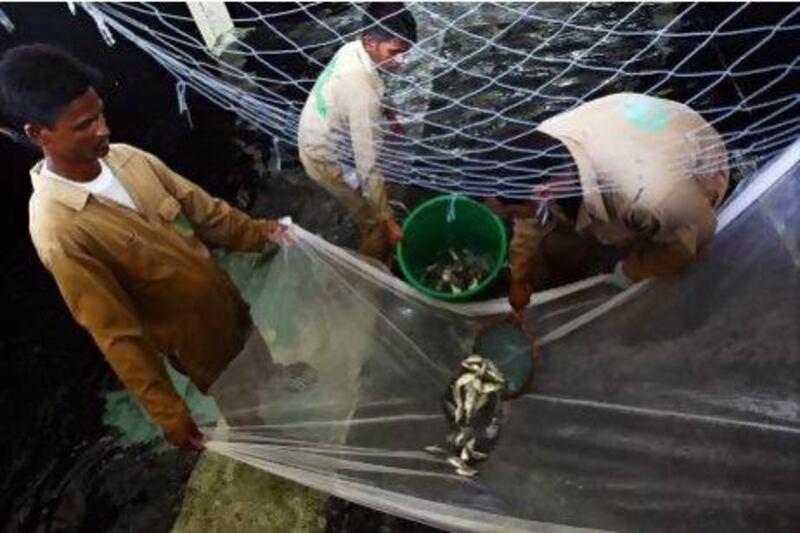ABU DHABI // A new marine research centre in Umm Al Quwain will have the capacity to hatch up to 10 million baby fish a year - and help the UAE ward off another bout of red tide - when it opens in early 2014.
This is more than six times greater than the existing Marine Resources Research Centre, and should help restock the country's depleted fisheries and protect endangered fish species.
It follows a grant last year from the President, Sheikh Khalifa, who gave the centre Dh75 million for the improvements.
The upgrade will also boost one of the key functions of the current centre - detecting red-tide plankton, which are toxic to fish and which bloom in warm weather and in the presence of nutrients.
Efforts to detect red tide have increased since the winter of 2008, when a prolonged case closed beaches and killed many fish.
As part of the upgrade, the existing centre has over the past year built three new laboratories, giving it a total of seven.
These allow scientists to operate a monitoring system, regularly testing water samples collected from around the country for red tide and fish diseases.
The new Sheikh Khalifa bin Zayed Centre for Marine Research will also have three labs of its own.
The old centre is currently breeding hammour and subaiti fish to be released into the wild, having managed to do the same with emperor fish last year. It also works on species including sweetlips, mullets, rabbitfish and sea bream.
The scheme aims to improve on the natural survival rate for larvae, which according to Dr Ebrahim Abdulla Al Jamali, the director of the centre, is less than one per cent.
"We are trying to release these fish when they reach 5 centimetres long to make sure they can have an increased chance of surviving," he said.
To get them to that size, the centre has six hatching tanks that are home to millions of fish eggs.
There are four ponds for breeding and six larvae tanks, where juvenile fish grow into adults.
The larvae feed on phytoplankton, which are grown on-site in the centre's microorganisms culture unit. When they are big enough, they are released into the mangrove swamps.
The swamps are particularly good nurseries for small fish and invertebrates - such as shrimp - because the decomposing leaves of the trees that grow there leave the water rich in nutrients.
The networks of roots also provide juvenile fish with plenty of escape routes from any predators.
This year,the centre aims to release 160,000 subaiti and hammour fingerlings into mangrove swamps, lagoons and government-protected areas around the coast that have been earmarked for this purpose.
“We have released 140,000 fish so far,” said Dr Al Jamali.
The Ministry of Environment and Water is also trying to preserve coral reefs, which are under threat from rising sea temperatures.
It has added four underwater coral "banks" to its existing four off the coast of Fujairah. Each one comprises 500 reefs that support about 24 species.
"Six new species were also added to the reefs," Dr Al Jamali said. "They have a high survival and growth rate."
The banks are considered crucial for the UAE and worldwide because they house fish and plankton - and provide a key defence against red tide.






